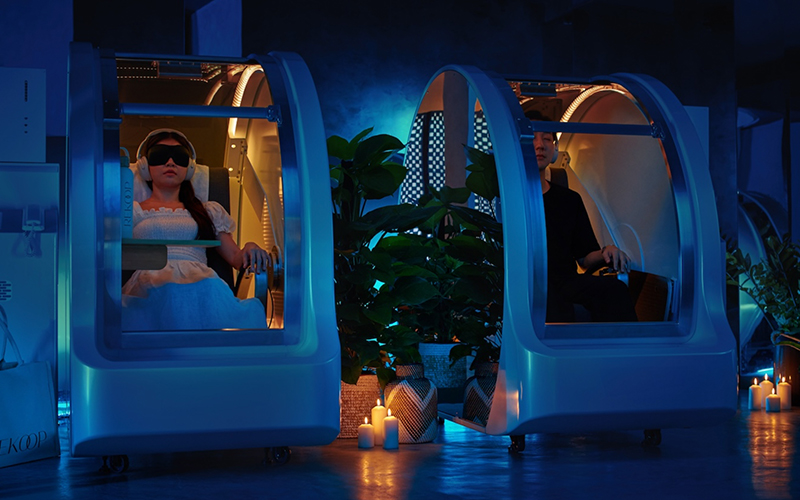Every year, I find myself asking, “What could possibly be next for wellness?” And yet, year after year, I’m amazed by the industry’s capacity for innovation and growth. In 2025, wellness is stepping into an exciting new era where the lines between holistic health and cutting-edge technology are blurring like never before. From AI-powered self-care to personalized DNA-based treatments, the landscape is evolving to meet the demands of a health-conscious global community.
With so much information swirling around, it can be overwhelming to keep track of what’s truly impactful. To make it easier, the team at Destination Deluxe has highlighted the most significant wellness trends for 2025 — each one promising to redefine our approach to physical, mental, and emotional health. Get ready to discover what’s next in the world of wellness.
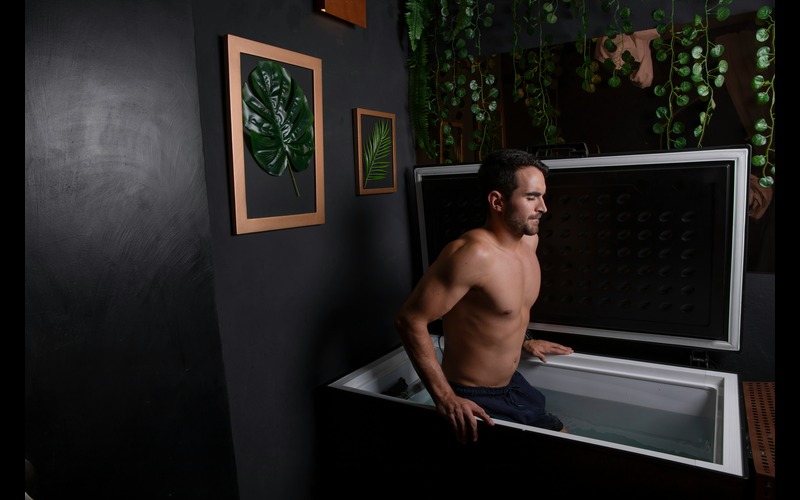
1. Self-Empowered Wellness: Biohacking for the Individual
WHAT’S THE TREND?
The rise of self-empowered wellness signals a shift towards sovereignty in health management, where wellness enthusiasts embrace biohacking and take control of their wellbeing through self-directed experimentation. Unlike trends driven by expert oversight, this wave prioritizes autonomy and a do-it-yourself mindset. Techniques such as sauna use, ice baths, and breathwork are becoming essential parts of many wellness routines, empowering individuals to enhance their physical and mental resilience. With the help of at-home health tracking devices, wearable technology, and personalized nutrition plans, individuals now have access to real-time data to guide their choices. Tools like blood glucose monitors, breath analysis devices, and HRV trackers allow people to fine-tune their wellness practices based on their unique biomarkers, making their approach highly individualized and data-driven.
WHY WILL IT MATTER IN 2025?
This wellness trend in 2025 reflects a broader movement towards autonomy in health management. The availability of user-friendly biohacking tools empowers individuals to make informed decisions without relying solely on traditional medical systems. Expect a surge in consumer interest for products and apps that support this personalized approach, as well as a focus on educating users on safe practices. As biohacking gains traction, we’re entering an era where self-empowered wellness becomes mainstream, allowing people to take health optimization into their own hands.
See also: Nominate Your Brand for the Destination Deluxe Awards 2025

2. Longevity: The Quest for a Longer, Healthier Life
WHAT’S THE TREND?
Longevity is the biggest trend for 2025. People want to live longer and that’s it. It is becoming a central focus in wellness, as consumers look beyond anti-aging to embrace practices and products that promote a longer, healthier lifespan. The trend encompasses a wide array of approaches, from cellular health supplements like NAD+ boosters and telomerase activators to lifestyle practices such as intermittent fasting, cold exposure, and circadian rhythm optimization. The aim is not just to extend lifespan but to enhance ‘healthspan’ — the years of life spent in good health.
WHY WILL IT MATTER IN 2025?
Millennials and Gen Z are driving the longevity trend, as both generations find themselves at the forefront of the health revolution. As Millennials enter middle age, they’re becoming more aware of potential health concerns and are eager to address them proactively at their root causes. Meanwhile, witnessing the health challenges faced by aging parents has heightened the focus on prevention, inspiring a collective desire to avoid similar issues. The longevity trend marks a significant shift in how we approach aging — emphasizing prevention, optimization, and overall healthspan enhancement rather than simply managing symptoms. With ongoing scientific advancements unraveling the mechanisms of aging, the wellness industry is leveraging this knowledge to deliver targeted solutions for cellular rejuvenation, metabolic health, and resilience. Consumers are increasingly turning to longevity-focused retreats, supplements, and innovative therapies as part of their wellness routines. In 2025, expect to see longevity practices become a core component of mainstream wellness offerings, setting a new standard where thriving well into old age is the ultimate goal.

3. Menopause Wellness: Embracing the Change
WHAT’S THE TREND?
In 2025, menopause wellness steps out of the shadows, emerging as a vital focus within the health industry. With a growing demand for targeted support, brands are developing products and services designed to ease the transition and address common symptoms like hot flashes, mood swings, and sleep disruptions. Menopause retreats, hormone-balancing supplements, and educational workshops are becoming integral to a comprehensive approach to this natural life stage.
WHY WILL IT MATTER IN 2025?
The growing conversation around menopause is breaking down stigmas and empowering women to prioritize their health during this critical phase. The trend highlights the need for tailored solutions, shifting the wellness industry’s attention towards inclusive offerings that cater to all ages. Look out for an increase in dedicated menopause programs and treatments across wellness resorts, as well as a rise in public awareness campaigns normalizing discussions around women’s health.
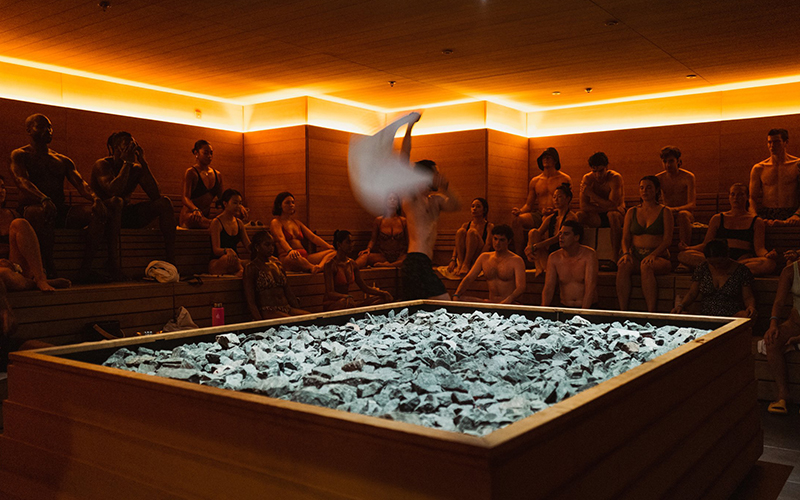
4. Community Saunas: A Revival of Ancient Rituals
WHAT’S THE TREND?
The resurgence of community saunas taps into the collective longing for shared, restorative experiences. In 2025, communal sauna spaces are being reimagined, blending traditional sweat lodge concepts with modern wellness practices. From pop-up urban saunas to expansive sauna villages in nature, these spaces foster social connection, mindfulness, and detoxification through heat therapy.
WHY WILL IT MATTER IN 2025?
New studies continue to highlight the numerous health benefits of regular sauna use, from improved muscle recovery to enhanced cardiovascular health and even dementia prevention. As awareness of these benefits grows, so does the interest in communal sauna experiences. In a world that has become increasingly digital and isolated, the desire for face-to-face interaction and collective healing is intensifying. Community saunas provide a welcoming space for people to unwind, connect, and rejuvenate together, making this trend a cornerstone of the evolving social wellness movement. This wellness trends in 2025 will foresee shared sauna experiences that play a significant role in promoting both individual wellbeing and a sense of community.
See also: Unlocking the Secrets of Saunas: A Path to Cognitive Vitality

5. The Modern Pilgrimage: Travel for Transformation
WHAT’S THE TREND?
The modern pilgrimage is redefining wellness travel, emphasizing journeys that foster spiritual growth and personal transformation. Whether it’s a multi-day trek along ancient routes or immersive retreats in sacred locations, travelers in 2025 are seeking experiences that provide a deeper sense of purpose and connection.
WHY WILL IT MATTER IN 2025?
In an age where mindful travel is gaining popularity, the modern pilgrimage offers an antidote to fast-paced tourism. These journeys encourage travelers to slow down, reflect, and immerse themselves in the spiritual and cultural essence of a place. Expect to see an uptick in curated wellness travel programs designed to guide participants on transformational paths, blending mindfulness practices with local traditions.

6. DNA-Based Treatment Programs: Personalization at the Core
WHAT’S THE TREND?
DNA-based treatment programs are ushering in a new era of hyper-personalized wellness. By analyzing an individual’s genetic blueprint, these programs offer tailored interventions that address unique health risks, optimize nutrition, and inform fitness plans. Advances in genomic testing are making these services more accessible than ever, allowing for precise and effective health recommendations. Leading wellness destinations like Zulal Wellness Resort are embracing this trend, incorporating DNA analysis into their comprehensive treatment offerings to provide guests with personalized wellness experiences.
WHY WILL IT MATTER IN 2025?
As consumers increasingly seek customized approaches to their wellbeing, DNA-based treatments are becoming a cornerstone of the wellness industry. The precision of genetic data empowers practitioners to create bespoke health plans, minimizing trial and error and enhancing overall outcomes. This trend signals a shift towards a future where personalization is not just preferred but expected in wellness offerings. With pioneering resorts like Zulal Wellness Resort leading the way, DNA-based programs are setting a new standard for individualized care and holistic health optimization in 2025 and beyond.
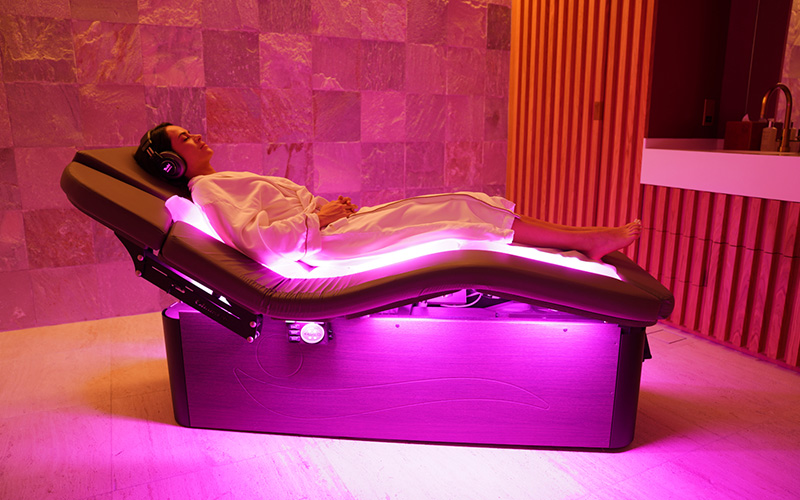
7. Touchless Treatments: The Future of Contact-Free Therapies
WHAT’S THE TREND?
The demand for touchless treatments is on the rise, as technology-driven, non-invasive therapies become a preferred choice for wellness seekers. Moving beyond infrared saunas, cryotherapy, and sound healing chambers, 2025 is ushering in a new era of innovation with the introduction of robotics in wellness. One notable example is Aescape, the world’s first robotic massage therapy system, which uses advanced AI-powered robot arms to deliver precise, personalized massages without human touch.
WHY WILL IT MATTER IN 2025?
The growing interest in touchless treatments signals a shift towards innovative, tech-driven approaches that cater to modern wellness needs. As concerns about hygiene and the desire for personalized care continue to shape consumer preferences, robotic massage systems like Aescape are poised to become mainstream. These treatments offer a unique blend of precision, consistency, and data-driven customization, appealing to a broad demographic seeking safe, efficient, and effective alternatives to traditional therapies. Expect to see a rapid expansion of robotic and touchless services across urban wellness centers, luxury spas, and even home wellness devices, marking a new chapter in the evolution of contact-free care.

8. Wellness for Special Populations: Inclusivity in Focus
WHAT’S THE TREND?
In 2025, the wellness industry is making significant strides towards inclusivity, with a growing emphasis on designing programs and products for underserved populations, including neurodivergent individuals, people with disabilities, and older adults. Tailored fitness classes, sensory-friendly spa treatments, and accessible wellness retreats are becoming more prevalent, addressing the unique needs of these groups. A notable example is the collaboration between SATCC (Standards Authority for Touch in Cancer Care) in the UK and therapists worldwide, training practitioners to offer specialized treatments for cancer patients. Contrary to previous misconceptions, evidence now shows that wellness therapies can be beneficial for cancer patients, offering relief and comfort without causing harm.
WHY WILL IT MATTER IN 2025?
The industry’s focus on inclusivity is bridging a long-standing gap in the wellness market, ensuring that holistic health solutions are accessible to all, regardless of their individual needs or conditions. The training initiatives led by organizations like SATCC highlight the growing understanding that wellness treatments, when adapted appropriately, can provide substantial benefits even for those with serious health conditions. This trend reflects a broader commitment to equity and expands the market to serve a wider, more diverse range of consumers. As wellness becomes more inclusive, it sets a new standard for comprehensive, empathetic care, making the industry more accessible and effective for everyone.

9. Tech-Free Wellness Escapes: The Digital Detox Movement
WHAT’S THE TREND?
In an age where technology is ever-present, the demand for tech-free wellness escapes is growing rapidly. These retreats focus on the concept of digital detox, encouraging participants to disconnect from their screens and reconnect with nature, themselves, and those around them in a fully unplugged environment. A key player in this movement is The Offline Club, a global initiative dedicated to helping people take breaks from their gadgets, fostering real-life connections and mindful experiences through tech-free events and gatherings.
WHY WILL IT MATTER IN 2025?
The effects of constant digital connectivity on mental health — such as increased anxiety, sleep disruption, and reduced focus — are becoming more widely recognized. In response, the trend of tech-free wellness escapes is meeting a growing desire for breaks from screens and notifications. These retreats offer the perfect space to reset, recharge, and cultivate mindfulness, providing a counterbalance to our digitally saturated lives. With the rise of initiatives like The Offline Club, expect to see a surge in wellness destinations and programs offering dedicated digital detox packages as part of their core experiences. This shift reflects a broader cultural movement towards mindful living, where stepping away from technology is seen as essential for holistic wellbeing.
10. Biotech Beauty Treatments: The Future of Skincare
WHAT’S THE TREND?
The beauty industry is undergoing a revolution with the advent of biotech-based treatments. From lab-grown skin cells to DNA-repair serums, 2025 sees a surge in science-driven skincare solutions that harness biotechnological advances. Products and treatments are moving beyond traditional cosmetics, incorporating stem cell therapy, CRISPR gene editing, and bio-engineered peptides to target aging, pigmentation, and other skin concerns at a cellular level.
WHY WILL IT MATTER IN 2025?
Biotech beauty treatments signify a new frontier in skincare, merging science and aesthetics for unparalleled results. Consumers are increasingly drawn to evidence-based, high-tech solutions that offer precision and efficacy, shifting the focus from surface-level products to treatments addressing root causes. The trend also marks a shift towards sustainable beauty practices, with lab-grown ingredients reducing the environmental impact associated with traditional harvesting methods. As this technology becomes more accessible, expect to see biotech beauty treatments integrated into spa menus and luxury skincare lines, setting a new standard for the future of beauty.
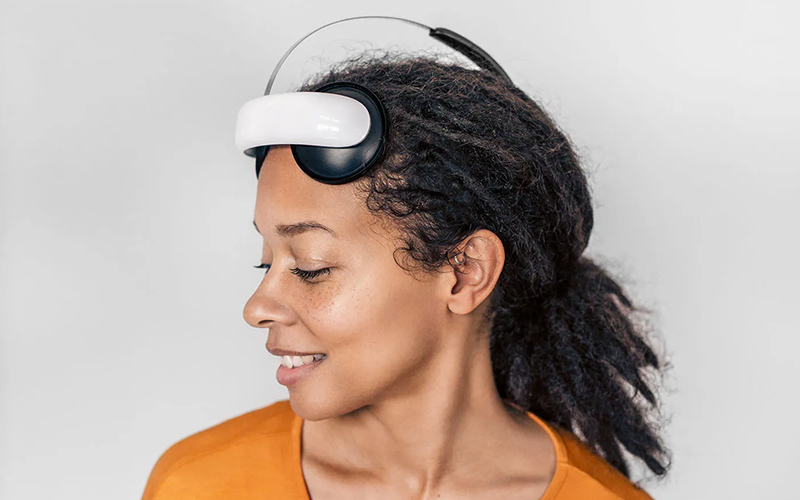
11. Tech-Enhanced Wellness: Embracing the Digital Health Boom
WHAT’S THE TREND?
In 2025, the wellness industry is embracing technology like never before, enhancing health experiences with a digital edge. From AI-powered fitness coaching and virtual reality meditation to smart home wellness systems, the fusion of tech and wellness is creating immersive, personalized experiences that cater to individual needs. Innovations like biofeedback devices, neurostimulation headsets, and even brain-computer interfaces are becoming mainstream, offering cutting-edge ways to optimize physical and mental health.
WHY WILL IT MATTER IN 2025?
Tech-enhanced wellness is responding to the growing demand for convenience, personalization, and data-driven insights. This trend allows individuals to tailor their wellness practices based on real-time data, making self-care more efficient and effective. As technology continues to advance, the integration of AI and machine learning into wellness practices is expected to grow, making bespoke health recommendations the norm. In 2025, prepare for a landscape where tech tools don’t just support wellness — they enhance it, creating a seamless fusion of mind, body, and machine.
12. The 3-Ingredient Trend: Simplicity in Wellness Products
WHAT’S THE TREND?
The wellness world is seeing a shift towards simplicity with the 3-ingredient trend, a movement that prioritizes minimalistic, clean formulations. Consumers are gravitating towards products — whether supplements, skincare, or food items — that feature three potent, recognizable ingredients, cutting through the clutter of complex labels. This trend reflects a desire for transparency, quality, and a return to basics.
WHY WILL IT MATTER IN 2025?
The 3-ingredient trend taps into the growing consumer demand for transparency and simplicity in wellness products. As people become more ingredient-savvy, they are opting for clean, straightforward formulations they can easily understand. This trend is transforming the industry, pushing brands to prioritize fewer, but higher-quality, ingredients. It also aligns with the broader movement towards sustainability, as shorter ingredient lists often mean less environmental impact and reduced waste. Expect this trend to dominate across wellness categories, from skincare and supplements to functional foods and beverages.
13. No More Endocrine Disruptors: A Clean Beauty Revolution
WHAT’S THE TREND?
In 2025, the clean wellness movement is taking a major leap forward, with a strong focus on eliminating endocrine disruptors across a wide range of products — not just in beauty, but also in household cleaning items, personal care products, and even fragrances. Chemicals like parabens, phthalates, BPA, and synthetic fragrances, known for their potential to interfere with hormone function, are being phased out in favor of safer, non-toxic alternatives. This shift is driven by growing consumer awareness, tighter regulatory standards, and a push for greater transparency in product formulations.
WHY WILL IT MATTER IN 2025?
The elimination of endocrine disruptors marks a significant turning point in the wellness industry, reflecting an increasing understanding of how these chemicals affect hormonal health and overall wellbeing. With rising rates of hormone-related health issues such as infertility, thyroid disorders, and metabolic disruptions, consumers are demanding cleaner, safer products across all aspects of their lives — from skincare and cosmetics to household cleaners and air fresheners. This movement is catalyzing innovation in natural preservatives, plant-based ingredients, and bio-compatible formulations. The shift away from endocrine disruptors is more than just a trend; it’s a holistic clean wellness revolution, paving the way for a future where everyday products support hormonal balance and contribute to long-term health. Expect to see widespread adoption of clean-label certifications and a greater emphasis on non-toxic living in 2025 and beyond.

14. Sleep Therapy: Prioritizing Rest for Optimal Health
WHAT’S THE TREND?
Sleep therapy continues to solidify its place as a cornerstone of wellness in 2025, with a growing number of wellness centers, spas, and innovative products dedicated to optimizing rest. From guided sleep meditations and Cognitive Behavioral Therapy for Insomnia (CBT-I) to advancements in smart mattresses and sleep-enhancing wearables, the focus on improving sleep health is stronger than ever. Sleep retreats, complete with personalized assessments and holistic treatments, are becoming increasingly popular, catering to those in need of a complete reset.
WHY WILL IT MATTER IN 2025?
Sleep enhancement has been a recurring trend since the early days of the wellness movement, and it remains a fixture on every wellness trend list because sleep is simply that essential. With busier lifestyles, heightened stress levels, and overstimulated minds from constant digital exposure, the quest for quality rest has never been more urgent. Poor sleep is linked to a range of health issues, including weakened immunity, cognitive decline, and increased stress, making it a critical component of any wellness routine. The growing emphasis on sleep therapy in 2025 reflects a deeper understanding of the connection between sleep and overall health, leading to targeted solutions aimed at boosting recovery, enhancing sleep quality, and promoting holistic wellbeing. This year, sleep optimization remains a key focus across the wellness industry, underscoring that a restful night’s sleep is the foundation of a healthier, more balanced life.
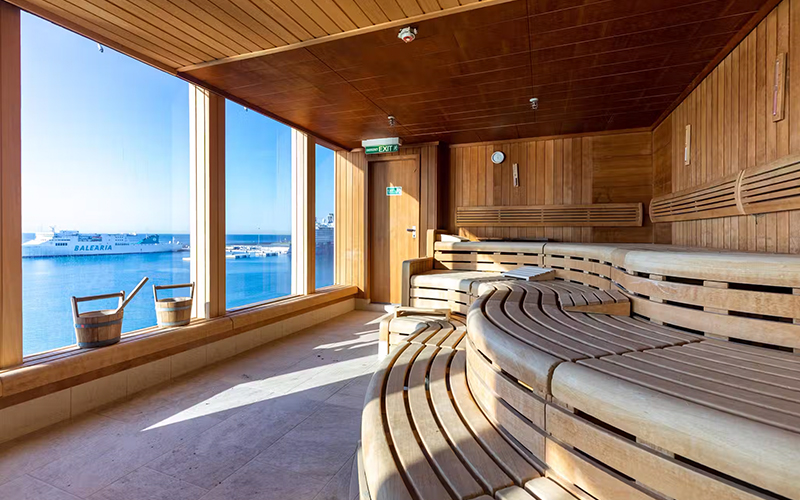
15. Travel Wellness: Elevating the Journey to Wellbeing
WHAT’S THE TREND?
Travel wellness is set to soar in 2025, as the industry focuses on transforming the entire journey — from airports to airplanes and even cruise ships — into an integral part of the wellness experience. Beyond just a trend, this shift represents a commitment to creating stress-free, restorative environments for travelers. Airports are already integrating wellness features, such as yoga rooms in San Francisco International Airport, oxygen lounges at Tokyo’s Narita Airport, and luxury spas in Cathay Pacific’s first-class lounge in Hong Kong. Now, the focus is expanding, with the aviation and cruise industries investing in human-centric designs that enhance passenger wellbeing.
WHY WILL IT MATTER IN 2025?
With increasing awareness of travel-related stress and its impact on health, airlines, airports, and cruise lines are making wellbeing a priority. Innovative measures include sound-absorbing materials, circadian lighting systems, and nature-inspired ambient soundscapes, like the soothing tropical sounds at Singapore’s Changi Airport, designed to promote relaxation. The cruise industry is also embracing this trend, with more ships incorporating state-of-the-art spas, wellness suites, and mindfulness programs to offer holistic experiences at sea. As wellness becomes a central focus of the travel experience, expect to see an industry-wide shift towards creating restorative journeys that prioritize physical, mental, and emotional health, making the trip itself as enjoyable and rejuvenating as the destination.

16. Social Wellness Clubs: Redefining Community and Self-Care
WHAT’S THE TREND?
Social wellness clubs are emerging as innovative spaces that blend holistic health practices with community engagement, offering environments where individuals can prioritize self-care while fostering meaningful connections. These clubs provide a range of wellness services, including fitness classes, meditation sessions, and therapeutic treatments, all within a socially interactive setting.
WHY WILL IT MATTER IN 2025?
The rise of social wellness clubs addresses a growing desire for communal experiences that support both physical and mental health. By integrating social interaction with wellness activities, these clubs create supportive communities that enhance motivation and accountability. Notable examples include Remedy Place, which has expanded its presence by opening a third location in New York City’s SoHo neighborhood, offering services like AI-powered bodywork sessions and vitamin IVs. In Asia, REKOOP has launched in Singapore, positioning itself as the region’s first social wellness club, combining cutting-edge technology with a modern approach to wellness. As we move into 2025, expect social wellness clubs to become central hubs for those seeking holistic health solutions within a community-focused environment.
See also: 12 Wellness Trends for 2024

